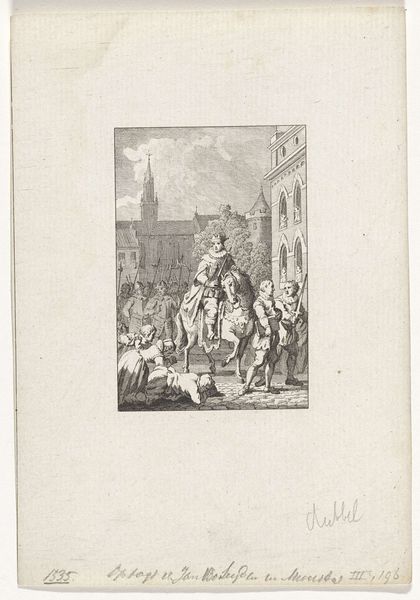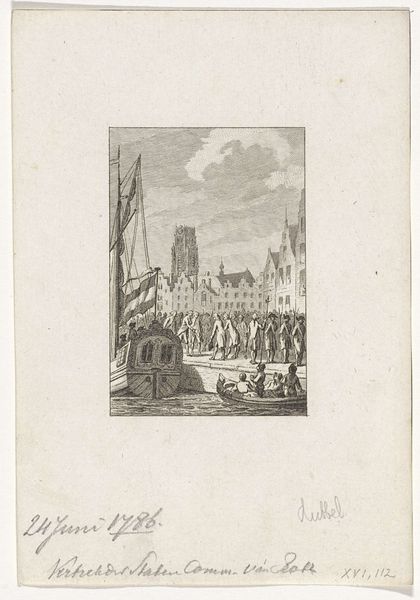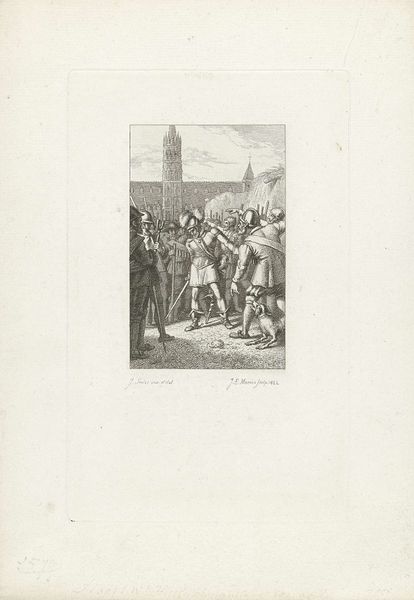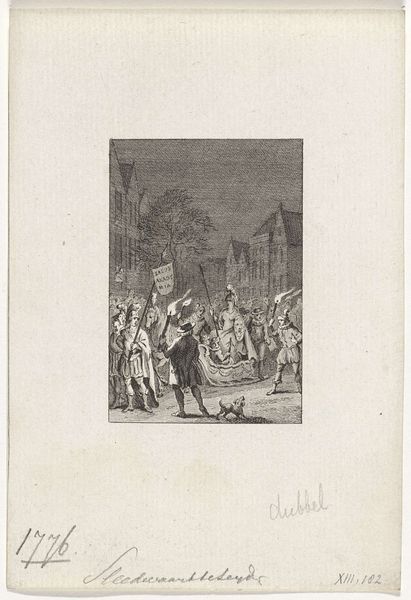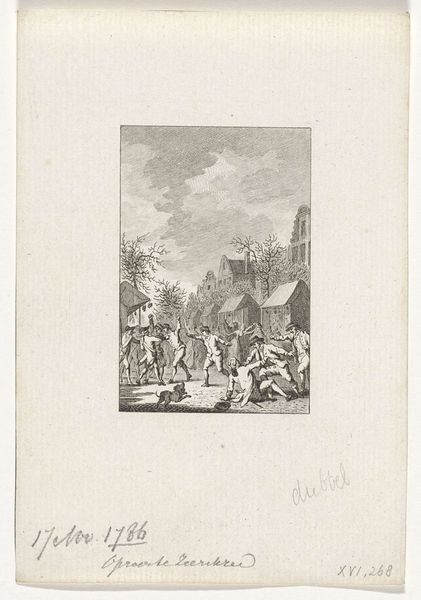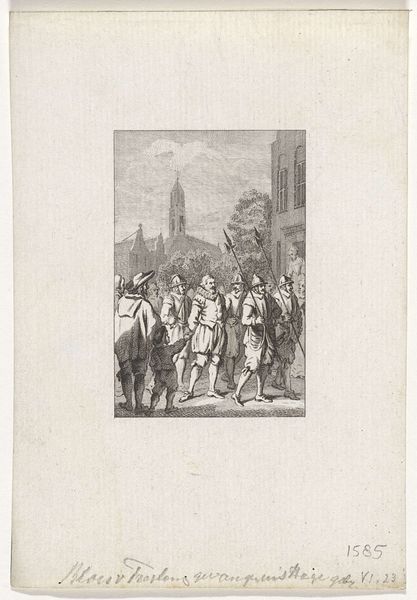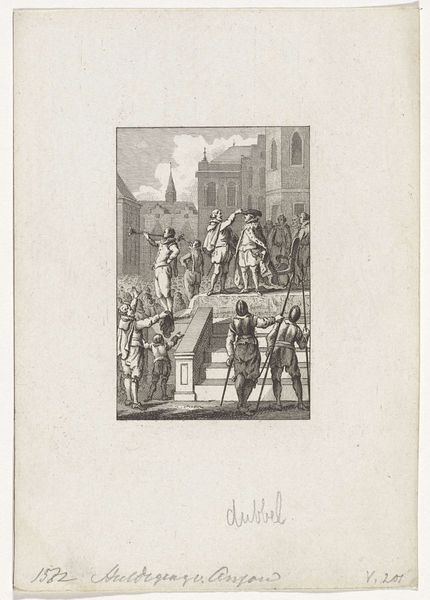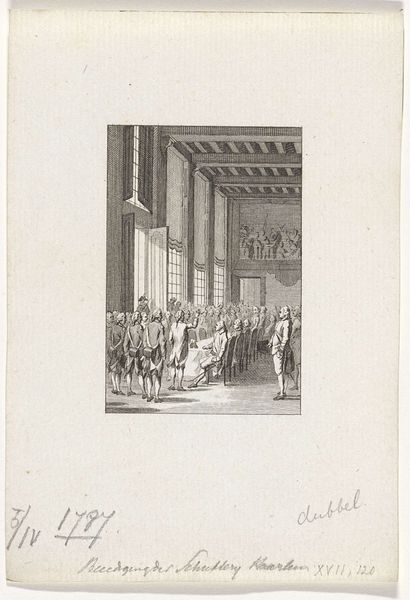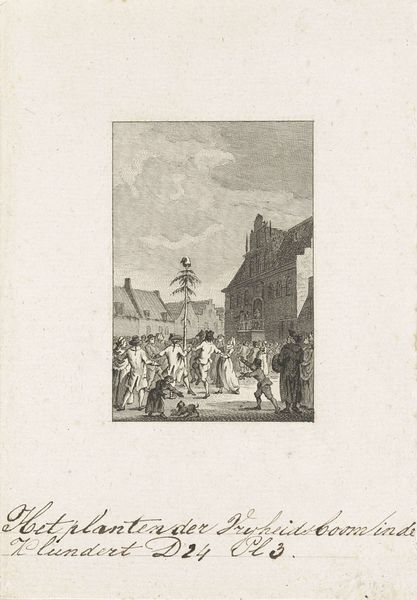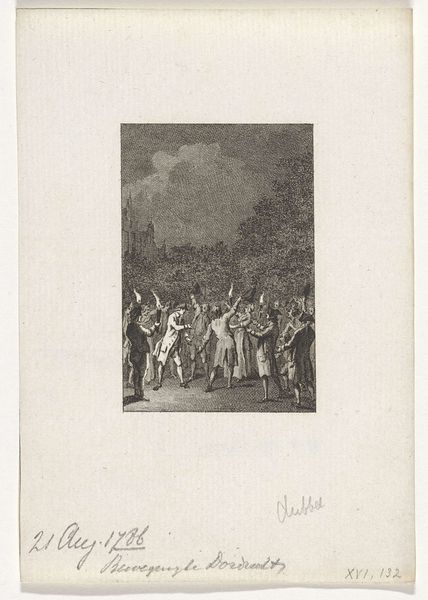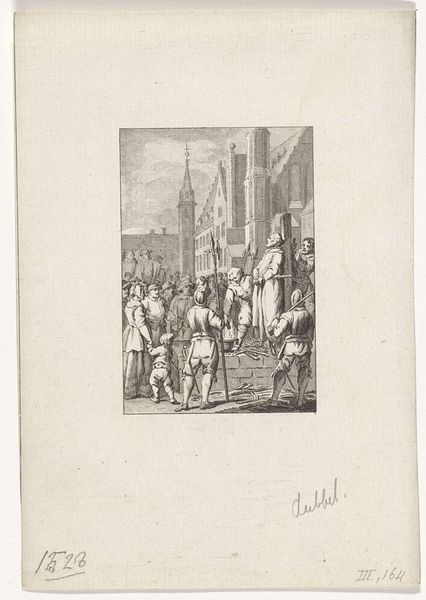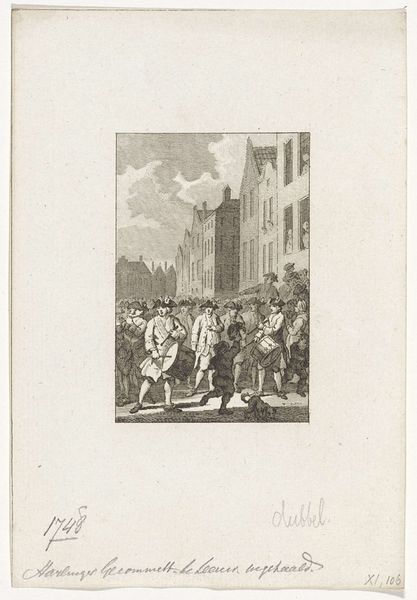
drawing, print, paper, ink, engraving
#
drawing
#
narrative-art
#
dutch-golden-age
# print
#
pencil sketch
#
figuration
#
paper
#
ink
#
line
#
cityscape
#
genre-painting
#
history-painting
#
engraving
#
realism
Dimensions: height 160 mm, width 100 mm
Copyright: Rijks Museum: Open Domain
Editor: This is "Uittocht van het garnizoen uit Maastricht, 1748" by Reinier Vinkeles. It's a print, made with ink on paper sometime between 1783 and 1795, depicting a garrison marching out of a city. I’m struck by how orderly and almost…staged it seems, even though it's meant to represent a real historical event. What do you see in this piece, considering its historical context? Curator: Well, seen through a historical lens, it speaks volumes about the political uses of imagery. These prints, circulating widely, shaped public opinion about war and national identity. It’s not just a record of an event; it's a carefully crafted narrative. Note how the soldiers are presented with uniformity and precision, a testament to Dutch military strength. What’s missing from this depiction, and what do you think that absence tells us? Editor: I guess you don’t see the messiness or brutality of war; it looks almost ceremonial. Is that a way of sanitizing the conflict for public consumption? Curator: Exactly. And consider the role of the Rijksmuseum itself. By displaying this work, how does the museum contribute to our understanding, or perhaps even reinforce certain narratives, about Dutch history and military prowess? This print becomes part of a larger institutional framework. Editor: So the museum is not just a neutral space, but actively shapes our perception of these events? Curator: Precisely! The museum chooses what to display and how to present it, thus engaging in a form of historical storytelling that can have profound effects on national identity and collective memory. How might the meaning of this image shift if it were displayed in a different context, say, alongside images of war’s devastating consequences? Editor: That’s a great point. Displaying it differently could challenge the original intent and create a completely different conversation about war and its impact. I hadn’t thought about that before. Curator: Thinking about art as active participant in socio-political dialogues helps us become more critically engaged viewers. Editor: I’ll definitely keep that in mind going forward. Thanks for offering such a thoughtful perspective.
Comments
No comments
Be the first to comment and join the conversation on the ultimate creative platform.
